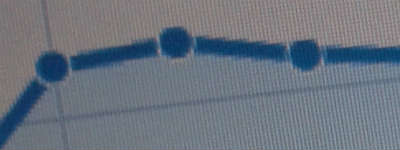Google Analytics: what are visits?
It’s all change with Visits and Google Analytics. In August 2011 Google altered when they consider a session to have ended. A small change according to their blog.
Get ready, I’m going to mention some odd sounding cookie names a fair bit!

In the old days
Prior to August 2011, If a user was inactive for 30 minutes or more, any future activity would have been attributed to a new visit. Any users that left your site but returned within 30 minutes were counted as part of the original visit.
Google made use of two cookies in keeping track of a session. One called __utmb and another called __utmc.
__utmc was a pure browser session cookie which expired as soon as the browser was closed. If __utmc didn’t exist, then it was a new visit.
__utmb is a persistent cookie that is set to expire after 30 minutes (by default). This cookie was used to register a new visit if you’ve left the site open in your browser (ie __utmc exists), but you disappeared for more than 30 minutes to do something else – perhaps to eat lunch.
Back to the future
From August 2011, the session cookie __umtc is no longer used to calculating visits and instead Google is using the __utmb cookie in combination with another cookie, __utmz, to determine when a new session begins.
__utmz is the traffic source cookie. I’ve explained the often misunderstood Google Analytics traffic sources in a previous post. This cookie only gets updated when the traffic source for the current visit is different to the traffic source stored in the cookie (excluding direct visits).
What Google Analytics does now is reset the __utmb cookie and increment the session counter in __utma (the 2-year persistent cookie storing your unique ID amongst other things) every time the __utmz cookie is updated – ie, each time the traffic source changes.
It does this whether the __utmc cookie exists or not. So, closing your browser, reopening it and revisiting a site (within 30 minutes of __utmb last being updated) will count as part of the same visit.
So What does this mean?
This means that you can’t compare visit data that crosses the date divide of August 16th 2011. Year-on-year comparisons are out of the window.
You will also see an increase in visits. How much of an increase depends on your traffic patterns – if visitors frequently hopped back and forth to your website from other sites or search engines in a short space of time, you’ll see a much bigger jump than say, a blog with a relatively low publishing frequency.
You will see a slight increase in traffic sources as the splitting of visits up into per-source chunks should reveal sources that were previously buried. Average page views per visit will fall slightly, and bounce rates will rise.
But…
My research has shown that visitors re-entering a site (within 30 minutes) via a referring site (not a search engine, or a visit with campaign tracking) are not causing the __utmz cookie to be updated, and no new visit is recorded. These visits are being considered a continuation of the original visit.
If we ignore the oddity of referring sites not being recorded properly, this change is probably going to make session-based reports easier for the layman to interpret. and a step closer to seeing per-visit traffic sources out of the box.
